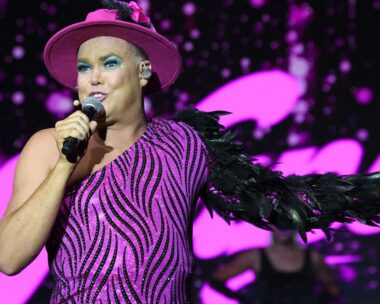Women are earning – on average – 24 per cent less than men, a new report from the United Nations reveals.
That’s 76 cents to every dollar. Or pence to pound. Whatever currency you’d like to convert it to, the equation equals a similar dire reality.
But when you drill down even further, the gender pay gap in the East Asia and Pacific region – which includes Australia – is even bigger than that in the Middle East and North America, at 20 per cent to 14 per cent respectively.
“There’s a real gap between where the community thinks we should be and where we are in terms of the labour market and the gender pay gap, which is not only too high, but it’s going up,” Dr Rae Cooper, an Associate Professor in Work and Organisational Studies at the University of Sydney Business School tells The Weekly online.
The latest ABS statistics show an 18.8 per cent gender pay gap which is the second 20 year high, says Dr Cooper.
And while the discussion often turns to women being less likely to ask for a pay-rise, or seen as demanding when they do, Dr Cooper blames the lack of transparency around bonuses and the lack of flexible jobs – including at the top end of the ladder – around the country.
“I don’t think it’s women’s fault; there is the ambition, there is the training, there is the desire to be in senior roles and to be across all industries among women. It’s just that it’s not happening,” says Dr Cooper.
“Unless we have major reconfiguration around things like flexible jobs for men and women, about changing expectations around gender roles and what’s an appropriate job for a woman and a man. I can’t see a major change unless we unscramble all of that.
“Many Australian women work below their skill set and work below what their pay level should be to have that flexibility to care.”
Bonuses are one of the biggest contributors to the gender pay gap, says Dr Cooper, with unconscious bias coming into play when managers reward employees.
“There’s a lot of evidence that we tend to reward behaviour like our own, and we tend to reward the people who are like us. It’s called sociability. So there’s a bit of a bias there that is part of the problem.”
Globally, women are over-represented in support positions, holding 63 per cent of these jobs, while they only hold 33 per cent of management positions, the report reveals.
And if men are holding more management positions, they are giving out a larger portion of bonuses than women, and are likely to reward other men.
“[Transparency] puts some accountability around the bonus conversations that mid-management are having with their teams,” says Dr Cooper.
“And while we often look at the glass ceiling, that’s only a proportion of the problem.
“Less commonly we talk about the sticky floor. And that’s where women dominate in those lower-level jobs but also in jobs which have less of a career track, so there aren’t massive jumps. That’s in careers like health and education, where women are the overwhelming majority of employees.
“And there’s also the glass walls, and that’s about where women work. And the Australian labour market is one of the most sexist, segregated labour markets in the OECD.”



